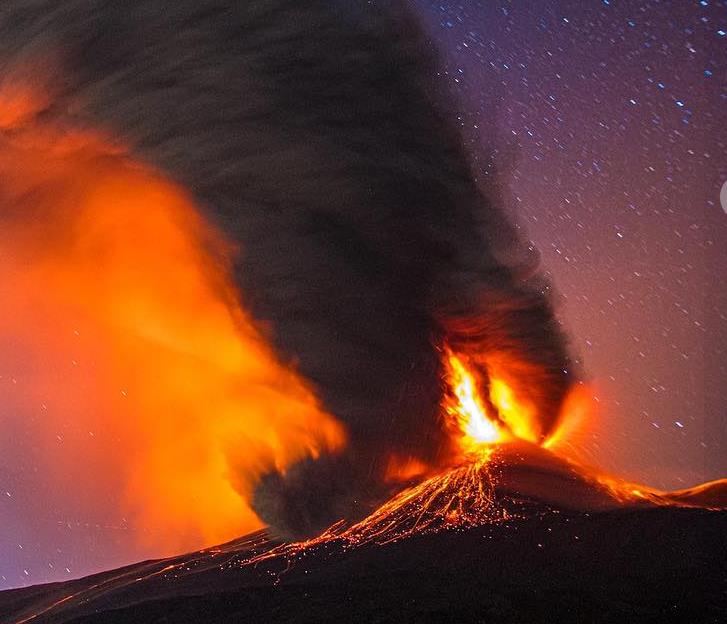Once again, the spectacular scene of a paroxysmal eruption from the new Southeast Crater could be admired on Mount Etna. The eruption began in the evening around 8:30 PM UTC (Central European Summer Time +2 hours) with Strombolian activity from the volcano. This activity rapidly intensified, and just an hour later, ash clouds started to rise, reaching up to 1000 meters above the crater’s elevation, as reported by the Toulouse VAAC. The main phase of the paroxysm then began around 12:00 AM UTC and reached its peak around 1:20 AM UTC. During this phase, ash was ejected to a height of 6100 meters, and a lava fountain several hundred meters high illuminated the night sky over Sicily. By 3:20 AM UTC, the lava fountain collapsed, but ash continued to rise. An hour later, the ash reached a height of 8200 meters and drifted southward. The ash emissions ended around 5:50 AM UTC. The lava fountain activity was accompanied by a lava overflow, with the lava flow not heading into Valle del Bove but rather towards the southwest. This corresponds to the path from the vent in the new Southeast Crater that previous lava flows had taken.
